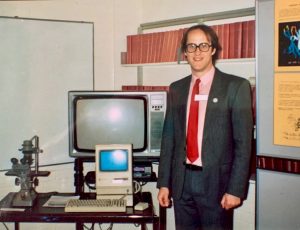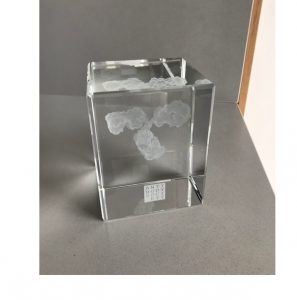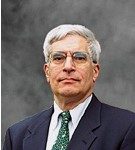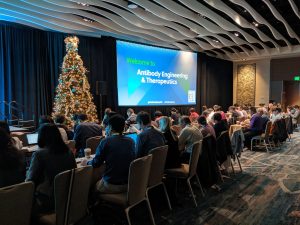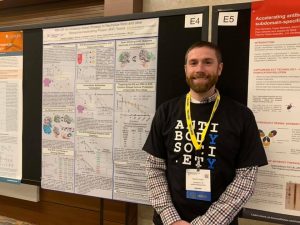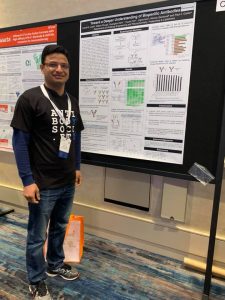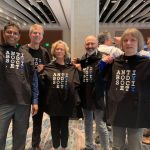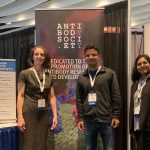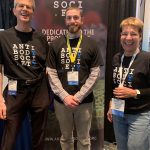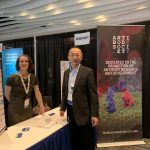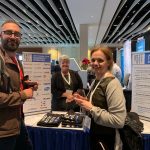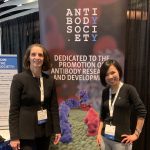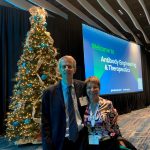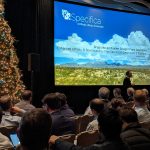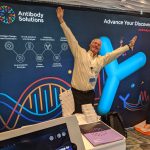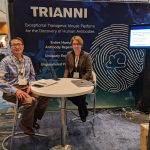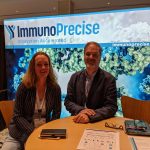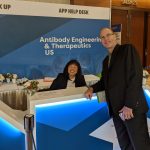Written by:
E. Sally Ward (a), Peter Jones (b), Tim Buss (c), Cristina Rada (d), Gregory Winter (e) and Richard Willson (f)
a Centre for Cancer Immunology, University of Southampton, Southampton, UK
b Lode, Cambridge, UK
c Proteogenomics Research Institute for Systems Medicine, San Diego, USA
d MRC Laboratory of Molecular Biology, Cambridge, UK
e Trinity College, Cambridge, UK
f Department of Chemical and Biomolecular Engineering, University of Houston, Houston, TX, USA
Photo courtesy of Kathleen Foote.
Jefferson (Jeff) Foote sadly passed away of pancreatic cancer on January 17, 2020 at the age of 64. He was a leading figure in physical immunochemistry and antibody humanization, a polymath of broad interests, and a wonderful friend and colleague. Jeff was born in Chicago and grew up in Tarrytown, NY. Following graduation from Harvard University where he worked in the laboratory of William Lipscomb, he earned his Ph.D. at Berkeley with Howard Schachman, studying the canonical aspartate transcarbamylase system. In 1985 he moved to the Laboratory of Molecular Biology (LMB) in Cambridge, where he worked with (now Sir) Greg Winter and then with Cesar Milstein. During his time in Cambridge, Jeff applied his understanding of protein biophysics and interaction kinetics to address problems in immunochemistry, increasingly leveraging the availability of the first emerging crystal structures of antibody-antigen complexes. This was before the BIAcore/surface plasmon resonance era that started in the early 1990s, and the work required a comprehensive knowledge of the inner workings of fluorometers, including stop-flow, and the associated mathematical tools. Jeff imported a Macintosh (“Mac”) culture to the laboratory, which was well-received by other local Mac fans in days when benchtop computers were still something of a novelty and there was a threat of other personal computer models becoming the norm.
Whilst at the LMB, Jeff made significant contributions in areas ranging from state-of-the-art antibody engineering to fundamental aspects of B cell biology, including the first description of the CDR grafting, or humanization, of an antibody specific for a hapten.[1] Jeff applied his expertise to determine the affinities of the test grafts, enabling the design principles of the engineered antibodies to be verified in precise, quantitative terms. This seminal study formed the foundation for the subsequent avalanche of therapeutic antibody humanizations, the first of which was the CD52-specific antibody Campath-1 (Alemtuzumab) generated in the Winter/Waldmann laboratories and used to treat chronic lymphocytic leukemia and multiple sclerosis. In addition, Jeff used the first antibody to be structurally solved in complex with antigen, the anti-lysozyme antibody D1.3, to define how framework residue modifications could restore binding behavior close to that of the donor (rodent) antibody to a humanized antibody.[2] As well as the biophysical characterization of framework mutants, he was also the first to synthesize a “consensus” framework.[2,3]
In parallel to Jeff’s work on antibody humanization, he carried out an extensive analysis with Cesar Milstein on how the maturation of the immune response is accompanied by an increased on-rate of antibodies for binding to their antigen. This study led to the paradigm that the selection of the “fittest” B cells is driven by interaction kinetics.[4] Subsequently, in a second publication with Cesar, Jeff observed that antibodies could undergo switching between different conformations (“conformational isomerism”), resulting in bi- or triphasic interaction kinetics.[5] This not only provided a molecular mechanism for the further diversification of antibodies, but also challenged the longstanding axiom that each lymphocyte produces an antibody with a single combining site.
Jeff was one of those more civilized members of the LMB who drove into work, rather than arriving with the appearance of a half-drowned rat following a cycle ride in the wintry, wet days that were common in Cambridge. Whilst working with Greg Winter in the tiny 5-6 person laboratory known as T4, Jeff relished being in the thick of the day-to-day, frequently frenetic activities. The day usually started with copious quantities of “Java”, an almost toxic, viscous dark brown liquid that kept the group members charged and running. Given that antibody humanization and, subsequently, antibody repertoire work were ongoing in the laboratory at this time, there was rarely a dull moment.

